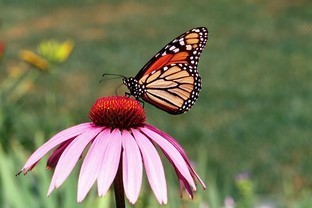|
Having trouble viewing this email? View it as a Web page.

|
|
|
Fresh from the
Field is a weekly album showcasing transformative impacts made by
partners supported by the National Institute of Food and Agriculture.
Editor: Falita Liles
May 31, 2018
|
|
Success Stories
 Protecting Georgia's
Pollinators
Many gardeners do not
realize how insecticides work in the garden, or how essential pollinating
insects are to the success of the food garden. University of Georgia Extension
created its Pollinator Spaces Project in response to this issue. The community
and school garden coordinator has conducted 22 workshops for 621 attendees. In
addition, more than 4,000 pollinator seed packs were given away at pollinator-focused
booths at conferences and exhibits, and agents have given workshops to more
than 9,000 people. Word of the project has spread throughout the state via social
media information, blog posts, and news articles.
NIFA supports the Cooperative Extension Service.
Read the full
story at UGA Extension. Photo: USDA.
|
 Making a Difference in
Vermont with Women Farmers
Women farmers and ranchers
are one of the fastest growing groups in agriculture, making up 30 percent of
all farm operators. However, women-operated farms tend to be smaller, and only
10 percent have annual sales over $50,000.
University of Vermont
Extension and the national Women in Agriculture Learning Network (WIA-LN)
provides information and resources for future farmers to succeed in agriculture
in the United States. In the past two years, WIA-LN delivered web-based
education directly to 3,300 people across the U.S.
NIFA supports the Cooperative Extension System.
Learn more at UVM
Extension News Stories. USDA photo.
|
Library
 Cold Plasma: The "Hottest"
New Food Safety Trend is More Potent when... Watered Down!
Go
ahead, search the web for "cold atmospheric pressure plasma." Over
20,000 hits, most of them a year or two old, will pop up. Ionized gases (containing
ozone and acidified nitriles) that make up cold atmospheric-pressure gaseous
plasma (CAP) looks like a blue torch, which could be exquisitely effective at
killing foodborne pathogens on contact surfaces and on fresh produce. Some
reports suggest that CAP is only marginally effective and these
discrepancies have long puzzled scientists who aim to optimize the technology.
NIFA-funded scientists at the University of Minnesota set out to determine
parameters that make CAP most effective against foodborne viruses.
NIFA supports this research through the Agriculture and Food Research Initiative.
Read
the full
journal article at the Plasma Processes and Polymers. Photo:
Max Teplitski.
|
Tweet of the Week
#NIFAIMPACTS

|
|

NIFA’s mission is to invest in and advance agricultural research, education, and extension that solve societal challenges. NIFA’s investments in transformative science directly support the long-term prosperity and global preeminence of U.S. agriculture. To learn more about NIFA’s impact on agricultural sciences, visit www.nifa.usda.gov/Impacts, sign up for email updates or follow us on Twitter @USDA_NIFA, #NIFAImpacts.
USDA is an equal opportunity lender, provider, and employer.
|
|